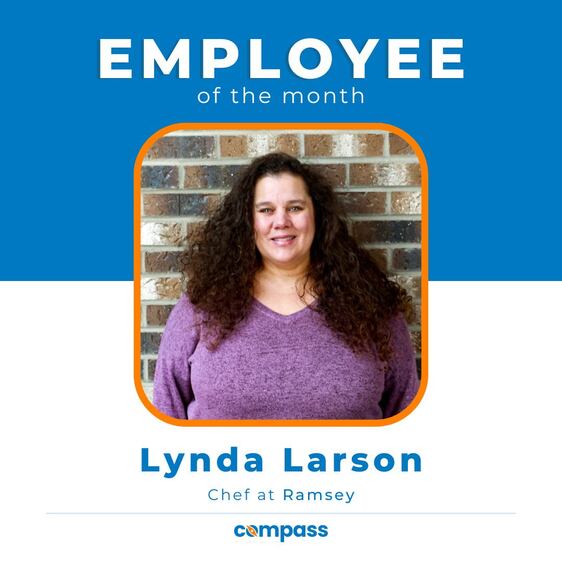|
Preparing Your Child for Kindergarten in East Bethel, MN
As parents in East Bethel, MN, you want the best start for your child's educational journey. At Compass Child Care, we are dedicated to ensuring that your child is fully prepared for kindergarten through our comprehensive PreK and preschool programs. Our Approach to Kindergarten Readiness
Conveniently Located for Families in Oak Grove and East Bethel Our East Bethel location is ideal for families from neighboring Oak Grove, offering easy access and a safe, welcoming space for children to grow and learn. Why Choose Compass Child Care?
Enroll Today! Join the Compass Child Care family and give your child the tools they need for a smooth transition to kindergarten. Contact us to schedule a tour and learn more about our PreK and full-day preschool programs in East Bethel. For more information about our programs and to enroll, Request a Tour at Compass Child Care East Bethel. We aim to provide a strong foundation for your child’s educational journey right here in East Bethel. Let Compass Child Care be your partner in ensuring kindergarten readiness. Discover essential tips for finding child care services that align with your family's needs and ensure a perfect fit. Finding child care services that align perfectly with your family's unique needs can be overwhelming for many parents. It involves sifting through countless options and assessing multiple factors, which can be stressful and time-consuming. Given the struggling child care situation in Minnesota, this can be an even bigger draw for this state’s residents. This guide is designed to help streamline the process, offering a clear pathway through the maze of choices. We'll cover how to identify your specific requirements, evaluate various options, and ultimately make an informed decision. By the end of this guide, you should feel more confident about selecting a service that meets your logistical and financial constraints, enriches your kid’s life, and fits seamlessly with your family dynamics. Types of Care Available Several types of child care services are available, each offering different benefits depending on your family’s needs.
Starting Your Search Embarking on your search for the right service can begin in your own community. Many parents find valuable information and useful tips through local networks, such as parent groups, community centers, or schools. Online platforms can also be a rich resource, providing reviews and ratings of local services. In addition, child care resources and referral agencies offer a wealth of information, including lists of licensed providers, details on state regulations, and personalized assistance to match your needs with available services. Starting your search armed with these resources can provide direction and make the entire process more manageable. Finding Child Care Services: Visiting and Evaluating Providers What to Observe and Ask During Visits When you visit potential child care services, observe the environment closely. Is it clean and well-maintained? Are there plenty of safe, age-appropriate toys and books? Watch how the staff interacts with the kids. Are they engaging positively, and do the kids seem happy and comfortable? Ask specific questions about their educational philosophy, discipline methods, and how they handle emergencies. Understanding these practices will help you determine if their approach aligns with your parenting values and expectations. This visit is also the perfect opportunity to see if the environment feels right for your child, as their comfort and security should be paramount in your decision. Engaging Your Kids in the Decision Process Including your child in finding child care services can be very beneficial. Notice how they interact with the caregivers. Do they seem comfortable and engaged? 0r are they hesitant, withdrawn, and shy? Their reaction to the environment can strongly indicate whether it’s a good fit. It’s important for your child to feel at home in their new care setting. That immensely impacts their ability to learn new skills, socialize, and develop. Also, discussing the potential change with your child can help prepare them for what to expect, easing the transition and setting the stage for a positive experience. Making the Decision Comparing Options After gathering information and visiting various options, it’s time to compare your findings. Reflect on each provider’s strengths and weaknesses in relation to your family’s priorities and needs. Which option best matches your budget, desired location, and your child’s temperament and interests? It may help create a chart or list to compare each choice's pros and cons visually. Make sure to truly and thoroughly consider each option's pros and cons. Preparing for Transition
Preparing for a smooth transition into child care is crucial for you and your kids. Discuss the new routine ahead of time to set expectations. If possible, visit the child care unit together several times before the official start date so your kids can become familiar with the new surroundings with you by their side. Gradually introduce them to spending more time at the facility. Such steps can minimize any anxiety and support a positive start to this chapter in their life. Adapting to Life Changes with the Help of Child Care A big life change can be difficult for you and your kids likewise. In such cases, you should rely on proper child care for help. After all, children need consistency and stability, especially during major transitions. Here are some life changes that demand the help of reputable child care professionals:
Researching potential child care options in Minnesota well ahead of the move can help you compare facilities and make an informed decision that best suits your child's needs. This proactive approach will help kids adjust more quickly to the new situation, ensuring that their emotional and developmental needs are addressed properly. Conclusion In conclusion, finding the right child care service is crucial for your family’s well-being and peace of mind. While the process of finding child care services can be extensive and sometimes overwhelming, it is worth it. By thoroughly evaluating your options and considering the physical and emotional needs of your kids, you can make a decision that benefits your entire family. Remember, the best choice fosters a nurturing, stimulating, and safe environment. With the right approach and resources, you can confidently navigate this challenging process. The goal is to make an informed decision that lays a solid foundation for your little one’s future. Photos via: Pexels Pexels Unsplash Pexels Ms. Lynda Shines at Compass Childcare in Ramsey: Celebrating Our Beloved Employee of the Month!11/15/2023  Hey there, Ramsey families! We've got some exciting news from our Compass Childcare family. This November, we're putting the spotlight on someone really special – Ms. Lynda, our November Employee of the Month! Now, if you haven't met Ms. Lynda yet, let me paint a picture for you. She's our super chef at Compass Childcare in Ramsey, but honestly, calling her just a chef doesn't do her justice. Lynda is the one who keeps our place sparkling, and she's usually the first smiling face our kiddos see every morning. What's so awesome about Ms. Lynda? Well, where do I start? She's the queen of hugs – seriously, her hugs are like magic, especially when one of our little ones needs it the most. Her smile? It's like a ray of sunshine that spreads happiness all around. And her laughter – it's contagious! You can't help but join in. But here’s the real kicker – Ms. Lynda is probably the most flexible person we've got on our team. She's always ready to jump into any classroom and lend a hand. Need some extra help? Lynda’s there before you even finish asking. She's a true team player and a huge part of why our days at Compass Childcare run so smoothly. We all just adore Ms. Lynda. She's more than an employee; she's a part of our heart here at Compass. Her energy and love make our childcare center more than just a building – it's a home full of laughter, learning, and lots of love. So, here's a huge shoutout to Ms. Lynda – thank you for being the incredible person you are. You make Compass Childcare a truly special place for all our Ramsey kiddos and families. And hey, to all the parents out there looking for a place where your kids will be loved, laughed with, and learn a ton – come check us out at Compass Childcare in Ramsey. We’re not just a childcare center; we’re a family, and we’d love to welcome you and your little ones into our Compass community. A Community Event Filled with Laughter, Creativity, and Treats Last Friday, the vibrant community of Ramsey, MN, was aglow with more than just autumn's amber hues – it was illuminated by the delightful spirit of Compass Childcare's Trunk-or-Treat event! 🎃🚗 A Night to Remember In the heart of Ramsey, an extraordinary evening unfolded. Families gathered, smiles were shared, and a parade of creatively decorated trunks opened their treasures to the excited crowd. This wasn't just an event; it was a celebration of community, creativity, and of course, the joy of childhood. Creativity Unleashed The trunks - oh, the trunks! Each one was a canvas, showcasing the imaginative prowess of our participants. From spooky spectacles to whimsical wonderlands, the variety was as vast as the creativity that our Ramsey community is known for. It was a testament to the spirit of Compass Childcare, where imagination and play are at the heart of learning. Laughter and Community Amidst the sea of costumes and candy, laughter was the evening's melody. Parents, children, and the Compass Childcare team bonded over shared experiences, creating memories that would linger long after the last piece of candy was given away. It's moments like these that reinforce our commitment to nurturing not just children, but families and our community. More Than Just Candy Yes, there was candy - plenty of it! But more importantly, there was a sense of belonging. As a leading childcare provider in Ramsey, Compass Childcare is more than a place for exceptional early education. We are a hub for community engagement, a space where families come together, celebrating milestones and everyday joys. Looking Ahead As we look back on this enchanting evening, we are already buzzing with excitement for what's next. Compass Childcare is committed to being an integral part of Ramsey's fabric, fostering environments where children thrive and communities flourish. Join the Compass Family Are you looking for a childcare solution that blends top-notch education with a deep sense of community? Compass Childcare in Ramsey is the answer. We invite you to visit us, see our approach in action, and become part of a family that values growth, learning, and the sweet moments that make childhood magical. Come be a part of our journey. Together, we're making Ramsey not just a place to live, but a place to thrive. |
AuthorWrite something about yourself. No need to be fancy, just an overview. Archives
June 2024
Categories
All
|
